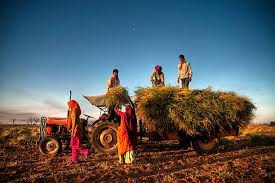Understanding Soil Health: The Key to Long-Term Farming Success
- Chirag Samantaroy
- Feb 19
- 2 min read
Soil isn't just dirt—it's a living, breathing ecosystem that plants, animals, and humans rely on. We all share the responsibility of caring for it. After all, healthy soil leads to better crop growth, improves water absorption, and even helps combat climate change by storing carbon. The USDA defines soil health as "the continued capacity of soil to function as a vital living ecosystem that sustains plants, animals, and humans." (Soil Health | Natural Resources Conservation Service)
Soil health relies on a balance of physical, chemical, and biological properties. The soil's physical structure allows roots to grow and water to penetrate. The soil’s chemical content provides essential nutrients. Finally, the soil’s biological component—full of microorganisms, earthworms, and other creatures—supports nutrient cycling and organic matter decomposition. Experts researching long-term farming success recommend practices like crop rotation, cover cropping, and no-tillage to maintain these vital soil properties. (Soil Health: Practical Strategies for Long-Term Agricultural Success | ICL US)
Farmers using these regenerative practices often see significant improvements in productivity and resilience. Crop rotation, for example, naturally replenishes soil nutrients and disrupts pest cycles, reducing the need for pesticides. Cover crops, planted during the off-season and left in the field, prevent erosion and keep beneficial microbes active. Studies in sustainability journals show a direct link between a diverse soil microbiome and increased crop yields and long-term sustainability. (Soil Health and Sustainable Agriculture)
Modern soil management isn't just focused on getting quick results; it’s about building a system that benefits farmers in the long run. By improving soil health—through practices that increase organic matter and support biodiversity—farmers can create a self-sustaining system. This means that over time, the soil requires fewer external inputs (like chemical fertilizers) and becomes better at trapping carbon from the atmosphere; this leads to healthier, more productive soil, which helps farmers save money and contribute to reducing climate change.
Understanding and managing soil health is fundamental to long-term farming success. Adopting sustainable practices creates a positive feedback loop: healthy soil yields healthy crops, which adds more organic matter to the ground, making our agricultural ecosystem healthier.


Comments